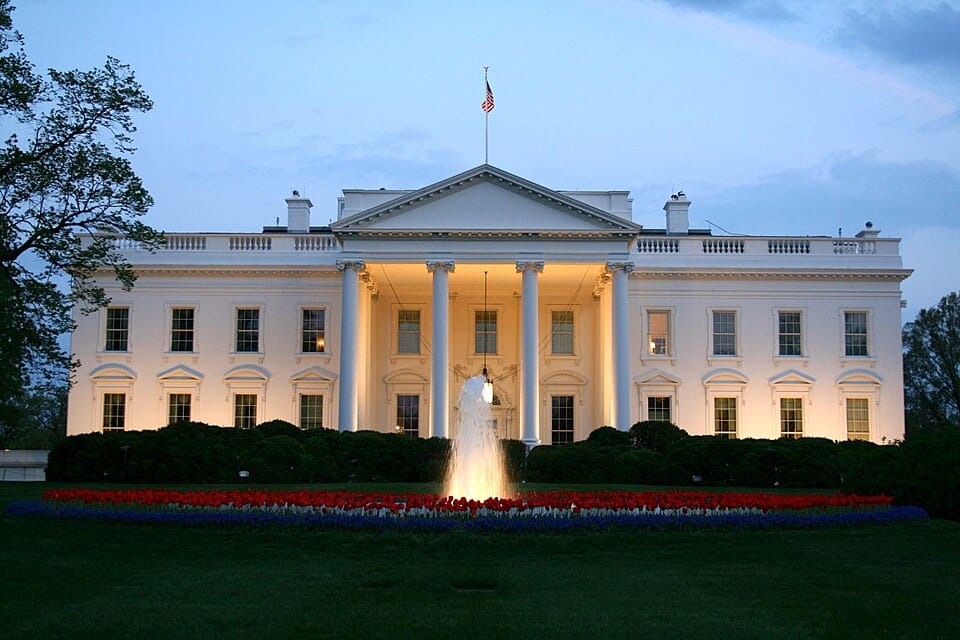Where Is The Economy Headed? Will Trump Policies Help Or Hurt?

Today, we’ll take a bird’s-eye view of the economy to gain perspective on President Trump’s Economic Policies in light of the Administration’s Budget Proposal, the “Big, Beautiful Bill, now being debated in the US Senate.
The first thing to appreciate is that the Federal Government, and hence the overall economy, is currently operating under the influence of the last Biden Administration Budget. The current debate centers on next year’s budget, which is scheduled to commence on October 1, 2025.
It’s also important to recognize that economic momentum is currently decidedly negative. The past four GDP Reports show the overall economy growing at 3%, 3.1%, 2.4%, and a very tepid -0.2% (negative), which, if it continues for another quarter, would qualify as a recession. (The final decision on recessions is at the discretion of the National Bureau of Economic Research, NBER).
Trump’s Tax Policy
This year (Fiscal 2024) marks the last year of the lowered tax rates introduced during President Trump’s first term in the 2017 Tax Cuts and Jobs Act. This is the most consequential aspect of the new Budget just presented. If the Senate does not pass the new Budget (it has already passed the House of Representatives), then taxes will return to their higher 2016 level, a decided negative for economic growth.
As it stands, the best we can hope for then, speaking of taxes, is that they remain the same, with no benefit but also no penalty.
Tariffs
Tariffs are a case of “taking the medicine now” to prevent more dire consequences later. Most analysts view the new Trump Tariffs as a short-term increase in prices, resulting in a theoretical one-time inflationary impact and a possible adverse effect on logistics (the supply lines). If all goes well, after international trade returns to a more normal flow, any impact on the economy would be minimal. However, that would result in a negative economic impact for the coming quarter.
The wild card in all this, and the part that’s impossible to predict, will be the reaction by other countries. Should these tariffs ignite reciprocal strategies, such as a new round of export tariffs, then all bets are off.
Immigration
Perhaps the most ironic impact of Trump’s Policies comes from his Immigration Policy. The Administration has been definitive in its effort to rid the country of illegal aliens. As this is written, demonstrations have begun in Los Angeles, California, over recent action by ICE, the Federal Agency tasked with border enforcement.
Setting aside the obvious issues for and against this type of migration, there remains an essential economic question that needs to be addressed. The Trump Administration is reacting to a reported 10–20 million migrants who came into the country during the Biden Presidency. According to most reports, these immigrants were given $5,000 to facilitate their transition. Add it all up, and that’s a direct stimulus to the economy (the migrants likely spent virtually all of the funds they were given to meet their living expenses: food, shelter, clothing). In total, that’s between $25 billion and $50 billion pumped into the economy. Under Trump, that stimulus is gone.
Fiscal Policy
The 2025 Federal Budget nominally increases expenditures, most notably in defense and border enforcement. Although the amount of increase builds upon the already heightened spending of the prior Administration, it likely will not be sufficient to provide any meaningful fiscal stimulus.
Making matters worse, any increase in stimulus from enhanced Federal Government spending will likely be more than offset by the steadily rising interest payments on the national debt, which already surpasses $1 trillion per annum.
The Federal Reserve
The other central “government” (sic) player in economic policy is the Federal Reserve. The Fed manages short-term interest rates and, most recently, controls the distribution of funds through Quantitative Easing and Tightening.
Despite repeated calls by President Trump for the Fed to lower rates (and help boost the economy), the Fed will stand pat with a current Fed Funds Rate of 4.5%. A rate that a growing number of economists, including me, feel is too restrictive given the current headwinds to the economic growth we’ve just outlined.
There is one last factor that is almost always overlooked but will play an important role in next year’s economy: Quantitative Tightening. This is a new policy tool that the Fed first utilized during the Great Financial Crisis of 2008, but then dramatically expanded during the COVID-19 pandemic.
At its peak, just over two years ago, the Fed had pumped nearly $9 trillion into the economy, expanding its “Balance Sheet” by that amount. In the two years since, the Federal Reserve has withdrawn funds from the financial system every week, making money “tighter.” In other words, the Fed is taking back the money it lent us. Currently, they are removing $1 trillion per year in these quasi-loan payments, which is a significant drag on the economy. Together, Balance sheet reductions and Federal Debt payments represent a dead-weight $2 trillion per year withdrawal.
Conclusion
Of course, this is not the kind of economic projection one hopes for: economic momentum, tariffs, immigration policy, and Fed Policy are all negative, with tax policy and fiscal policy-neutral. From this perspective, it becomes apparent that the economy is facing significant hurdles in returning to historic growth levels. It will make the Administration’s projected Fiscal 2025–26 growth rate of 2% a real challenge.
Follow me here on Medium for more stories from the ValueSide.
REFERENCES
GDP
https://www.bea.gov/data/gdp/gross-domestic-product
President’s Proposed 2026 Budget
https://www.whitehouse.gov/omb/information-resources/budget/
Tariffs
https://taxfoundation.org/topics/tariffs-and-trade/
Immigration
https://www.pewresearch.org/short-reads/2024/09/27/key-findings-about-us-immigrants/
https://www.ice.gov/detain/detention-managementhttps://www.migrationpolicy.org/programs/data-hub/us-immigration-trends
Fiscal Stimulus
https://www.cbpp.org/research/fiscal-stimulus
Federal Reserve